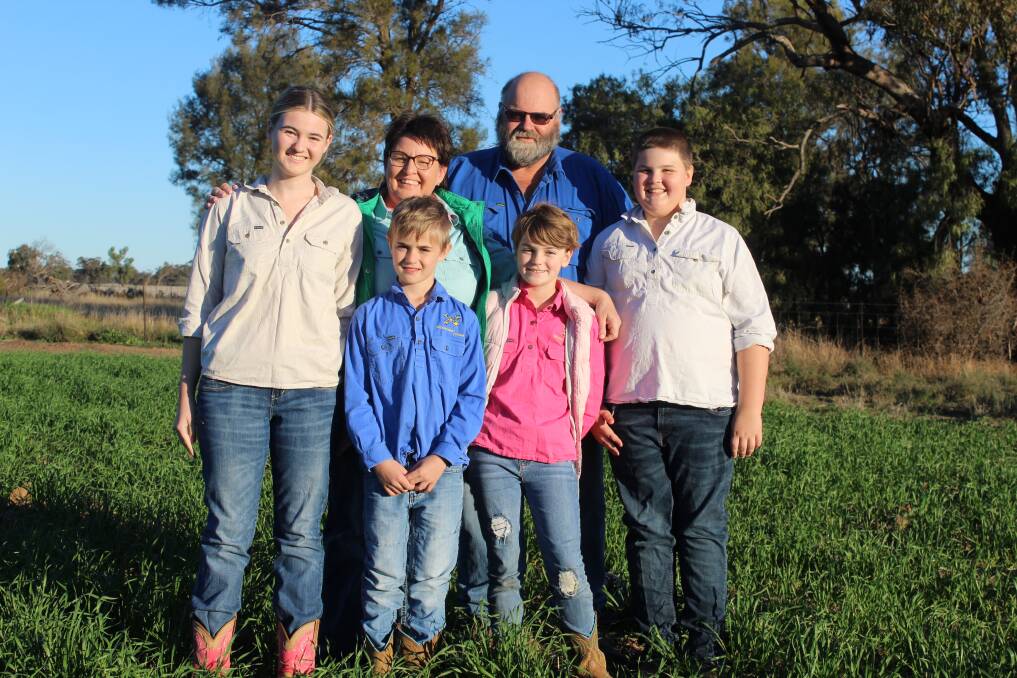
With a family farming background since 1886, Bill and Fiona Aveyard could be forgiven for just doing what has always been done on their properties near Tullamore, NSW. That is not the case.
Subscribe now for unlimited access to all our agricultural news
across the nation
or signup to continue reading
Looking to diversify income streams and improve sustainability, in 2018 the Aveyards created their own branded meat and have not looked back since.
Outback Lamb began as boxed lamb and sausages but is now producing single origin lamb sausage rolls and pies to great success.
On four properties in the Tullamore and Trundle region, the Aveyards run first-cross Merino ewes on a little more than 1620 hectares (4000 acres) of their own and share farm another 1215 hectares (3000 acres) with Mrs Aveyard's sister.
While Outback Lamb was started as an alternative revenue stream, Mrs Aveyard said its roots grow deeper.
"We created Outback Lamb after we took a look at the sustainability of our enterprise," she said.
"We wanted to guarantee we would have something to pass on to our children if they want to continue the farming business.
"It was more than just diversifying revenue, it was looking at farming practices which are more sustainable environmentally as well.
"We strongly believe in regenerative farming and aim to be carbon neutral by 2030.
"Our farming strategy is now firmly based around grass-fed production, regenerative pastures, value-adding and whole animal consumption."
Mrs Aveyard said the brand is on the rise.
"Outback Lamb has been steadily growing over the past two years where we have moved away from whole bodies to the butcher shop towards pies and sausage rolls.
"We have made a conscious effort to focus on that value adding, rather than supplying city butchers, and grow that business.
"There are some interesting developments in the works and the next year or two will be big ones for Outback Lamb."
One aspect of their enterprise, which the Aveyards are giving attention to, is ewe size.
"Often we buy my dad's first-cross Merino ewes," Mrs Aveyard said.
"He has a really great Merino flock of classed ewes and puts a White Suffolk over them.
"I love those White Suffolk first-cross ewes.
"They are quite maternal and are not quite as big as Border Leicesters, which means they do not require as much feed.
"Even for me, I like dealing with a slightly smaller animal in the yards.
"We also found they were good when the wool market was strong, providing a lovely comeback wool from those strong Merino lines.
"We generally work on our first-cross ewes producing a lambing percentage of around 150 to 160 per cent.
"Part of our strategy towards being carbon neutral by 2030, we are focusing on a moderate ewe size in our breeding flock.
"I have bought in a small mob of 340 Probreed ewes from Victoria, which are a smaller sheep again, averaging about 75 kilograms. They are really good converters.
"The idea is to run less sheep which are highly productive, putting off a similar amount of kilos because of multiple births.
"Those lambs we will plan to get off at 18 to 20 weeks and that will meet our domestic market with Outback Lamb, providing a carcase weight of around 20 to 22kg.
"We see that as a long-term strategy for how we want to farm and if it works well, we will definitely move more into those style of sheep.
"Ultimately, as sheep producers we get paid by the kilo. If a lamb is dressing out at 30kg and costs the same as a one at 22kg, that is a big difference.
"It is a delicate dance to make the environmental progress we want, balanced with financial success."
Mrs Aveyard enjoys the technical side of selecting rams for their enterprise.
"We generally get our rams from Moracara Poll Dorset stud at Wongarbon," she said.
"When I first came home to the farm in the '90s, they had a guy who was basically the pioneer behind ASBVs, Allan Luff.
"He was always at their sales and he took me through the catalogue and took the time to show me how the ASBVs all work.
"I'm a bit of a science and tech nerd so I love that sort of thing. The fact he was happy to invest that time in me early on - I really appreciated it.
"With the Kellys at Moracara being at the forefront of ASBVs, it has made it easy to utilise that information to improve our flock."


